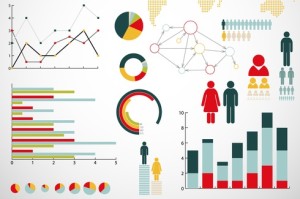
To derive business value from the Internet of Things (IoT), companies must focus on analyzing real-time data from things, staffing, and business processes.
In today’s hyper-connected world, even a humble object like a sensor can acquire superpowers. For instance, a sensor inside an offshore drilling rig checks for damage to a critical valve by regulating pressure in the oil well 7,000 feet below the ocean’s surface.
Just a few years ago, this sensor’s generated data might have gone unnoticed. That was before the Internet of Things. Today, with the right hardware and software, organizations can ingest and analyze real-time data to achieve business benefits.
The real-time data explosion
The IoT universally connects people, mobile devices, machines and devices via networks. IDC predicts that the IoT’s installed base will be roughly 212 billion machines and devices worldwide by the end of 2020. This includes 30.1 billion installed connected (autonomous) things. The implications of this change for business, government and all of society are only just beginning to show.
Pre-IoT, most organizational data was created in-house: databases, files, presentations and spreadsheets. They sent this self-generated data to a centralized repository. They stored it until they could analyze it. During the data warehouse era, organizations ran their operations and made decisions based only on this warehoused data.
Gathering intelligence and insights from this centralized data could take days, weeks or even months . It could take even longer to make decisions based on these findings. In the age of the IoT, that’s not fast enough, and it leaves out too many additional sources of valuable information.
In the last five years, the volume of unstructured data has mushroomed. Big Data now comes from websites such as from Google, Amazon, Facebook and Twitter; from mobile devices like phones or tablets; and from machines and sensors on equipment, such as smart oil wells.
Vast quantities of data are being generated every instant by the IoT about how people are living, working and purchasing, and how machines and networks are operating. These days, organizations must use big data – whether structured (table and row format, such as from a relational database), semi-structured such as XML, or unstructured (such as machine data, or social media).
Edge analytics and fog computing
Edge—or “fog” —computing is a novel method of discovering new patterns enabled by the IoT’s massive data sets. Fog computing takes place right where people are using mobile devices, and right where sensors are tracking and reporting performance and condition within industrial systems. The rig sensor’s signal is an example of an edge activity captured in the big data torrent. And it can be tracked and analyzed using fog computing. (See: “Fog computing: a new IoT architecture”).
The tricky aspect is that the half-life of some big data is quite short. Even if it takes only hours to go to a data center before it is analyzed, data can become obsolete . If the rig’s sensor reports a sudden change in pressure, for example, the valve might fail before the rig operator knows there’s a problem.
This is where “edge analytics” derives its meaning. Big data has to be analyzed on the network edge, right where people, devices and machines are generating it. Storing data in a warehouse and waiting on decisions doesn’t cut it anymore.
Enabling data-based decisions
The hyper-connected world of the IoT offers tremendous opportunity for business. Organizations must focus on improving the quality of each decision they make. How much value they obtain from the IoT depends on how well they secure, aggregate, automate and draw insights from data at lighting speed.
If organizations get their big data strategy right, the results can pay off in a big way. For example, if the rig operator discovers the valve flaw in time to replace it during routine maintenance, it averts the huge cost of an unexpected shutdown.
Overcoming digitalization challenges
To deal with fast, big data in the IoT, it is necessary to acquire stronger computing engines to accelerate applications and power data-intensive analytics. An IoT project also needs an operating environment that is common to both the data center and the network edge. Such an operating environment must bridge traditional and emerging applications and manage varying workloads better.
There are four specific areas that must be improved to make effective use of the IoT:
- Data — Gathering, storing and analyzing data from connected machines and devices.
- Things – Connecting the right machines, devices and equipment to capture truly useful data.
- People — Equipping employees to make the most of the IoT through training and systems that are user-friendly.
- Business process management — Bringing business and operational processes up to date.
Shakespeare referred to the future as “the undiscovered country.” With the advent of big data, and with the right tools and strategy in place, organizations can create their own future by discovering the insights hidden within their data stores.